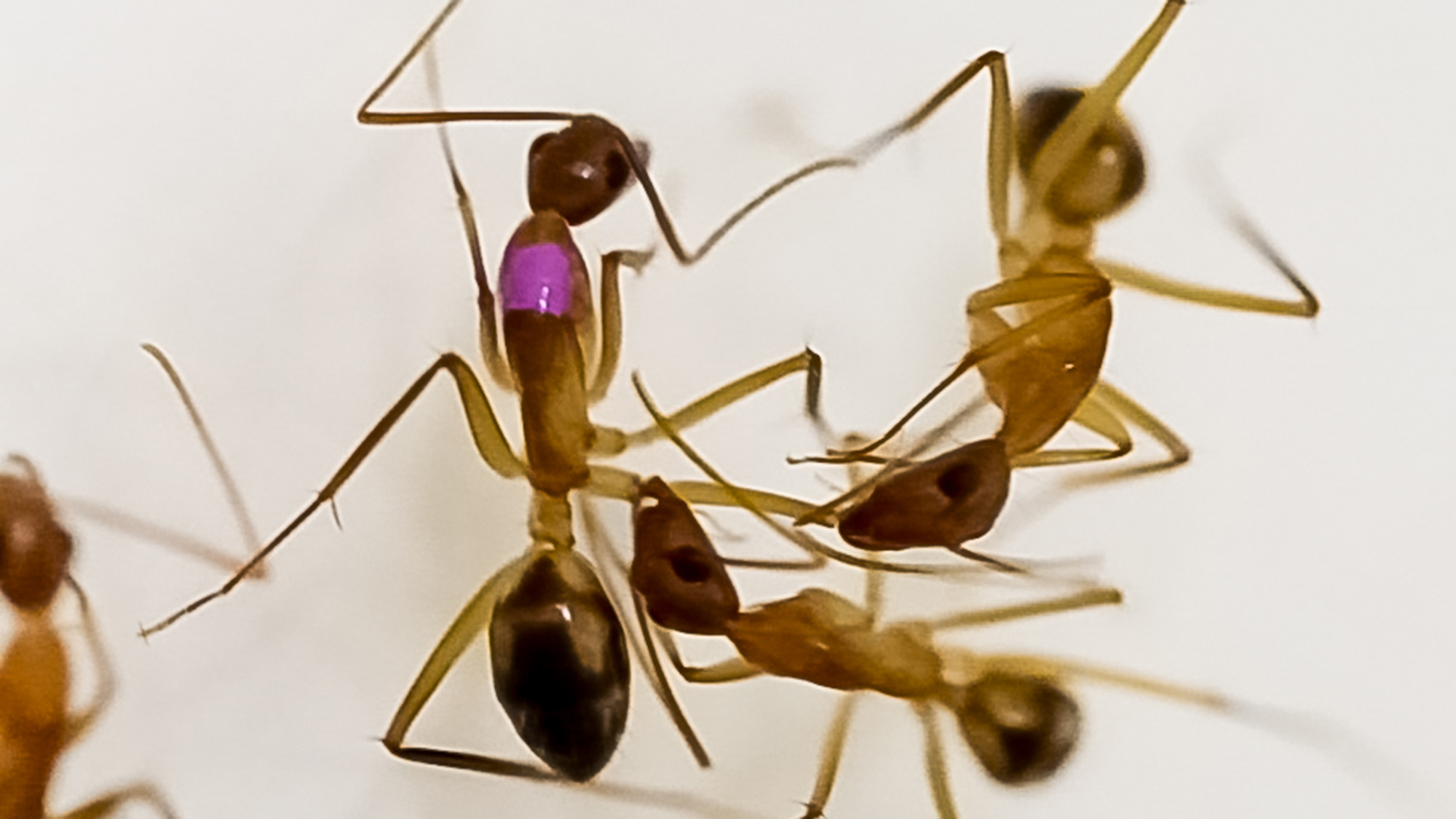Humans are not the only animal species that tries to heal wounds–or even perform amputations. Some carpenter ants appear to treat their nestmates with wound cleaning or removal of a limb and could even be tailoring the course of treatment depending on the type of injury. The findings are described in a study published July 2 in the journal Current Biology and observed in the video above.
“When we’re talking about amputation behavior, this is literally the only case in which a sophisticated and systematic amputation of an individual by another member of its species occurs in the animal Kingdom,” study co-author and University of Würzburg behavioral ecologist Erik Frank said in a statement.
For ants, wound cleaning is not exclusive to only one species. Megaponera analis ants use a special gland to deliver antimicrobial compounds meant to quell possible infections. However, the Florida carpenter ants included in this new study don’t possess this kind of gland and appear to only be using mechanical means to treat their fellow ants. This care involves one of two routes. In the first method, the ants perform wound cleaning with their mouthparts, without the antibiotic-like secretions that other ants have. The second method includes a cleaning like the first, but is followed by complete removal of the affected leg with their mouths. To determine which is the best course of action, the insects appear to assess the type of injury.
In the study, the team analyzed two types of leg injuries–lacerations on the femur and those on the ankle-like tibia. All of the injuries to the femur were accompanied by initial cleaning of the cut by a nestmate. A nestmate then completely chewed the leg off. Tibia injuries only received a mouth cleaning. In both of these cases, the ants with experimentally infected wounds had a much greater survival rate.
[Related: Matabele ants might be able to diagnose and treat infected wounds.]
“Femur injuries, where they always amputated the leg, had a success rate around 90% or 95%. And for the tibia, where they did not amputate, it still achieved about [a] survival rate of 75%,” said Frank. This is in contrast to the less than 40% and 15% survival rate for unattended infected femur and tibia abrasions, respectively.
The team believes that the preferred path of wound care may be related to the risk of infection from the wound site. Micro-CT scans of the femur revealed that it is largely composed of muscle tissue. The muscle tissue suggests that the femur is a hemolymph–a part that plays a functional role of pumping blood from the leg into the main body. An injury to the femur means that the muscles could become compromised and less able to circulate potentially bacteria-laden blood. However, the tibia has less muscle tissue, so has little involvement in blood circulation.
“In tibia injuries, the flow of the hemolymph was less impeded, meaning bacteria could enter the body faster. While in femur injuries the speed of the blood circulation in the leg was slowed down,” said Frank.
Camponotus maculatus ants can clean wounds using their mouthparts. CREDIT: Danny Buffat.
Initially, it appeared that if tibia damage results in faster infections, amputating the full leg would be the most appropriate course of action. However, the team actually observed the opposite. The speed at which the ants can amputate a leg makes a difference and an ant-assisted amputation takes at least 40 minutes. With tibia injuries, the team’s experimental testing showed that if the leg was not immediately removed post-infection, the ant would die.
“Thus, because they are unable to cut the leg sufficiently quickly to prevent the spread of harmful bacteria, ants try to limit the probability of lethal infection by spending more time cleaning the tibia wound,” study co-author and University of Lausanne evolutionary biologist Laurent Keller said in a statement.
According to the team, the fact that these insects can diagnose a wound and see if it’s infected and then treat it makes it “the only medical system that can rival that would be the human one.”
With the sophisticated nature of these behaviors, a logical next course of study would be to figure out how these ants are capable of such precise care.
[Related: Invasive ants leave lions scrambling for prey on the savannah in an ecological chain reaction.]
“It’s really all innate behavior,” said Keller. “Ant behaviors change based on the age of an individual, but there is very little evidence of any learning.”
The team is now running similar experiments in other Camponotus species to investigate how conserved this behavior is and unpack whether all ant species that lack a special antimicrobial gland also perform amputation. Since the ant receiving care also allows for the slow removal of a limb while conscious, the team hopes to further explore our understanding of pain in ant societies.
“When you look at the videos where you have the ant presenting the injured leg and letting the other one bite off completely voluntarily, and then present the newly made wound so another one can finish [the] cleaning process—this level of innate cooperation to me is quite striking,” said Frank.

